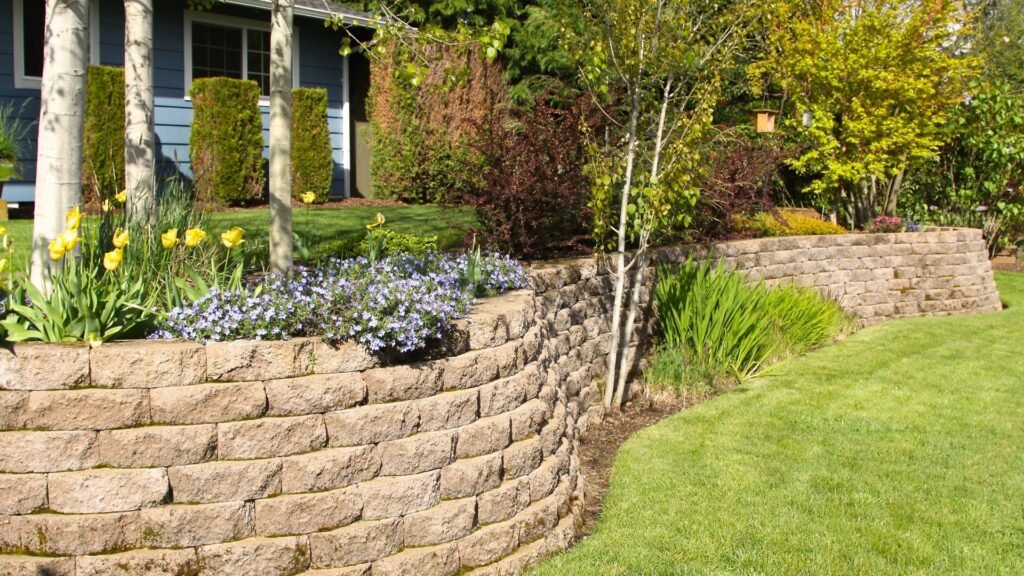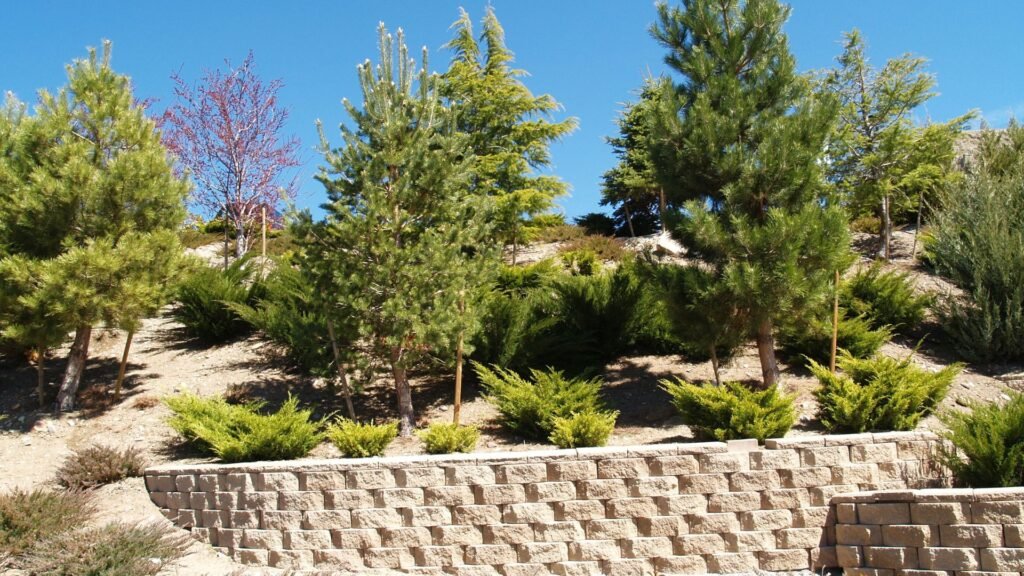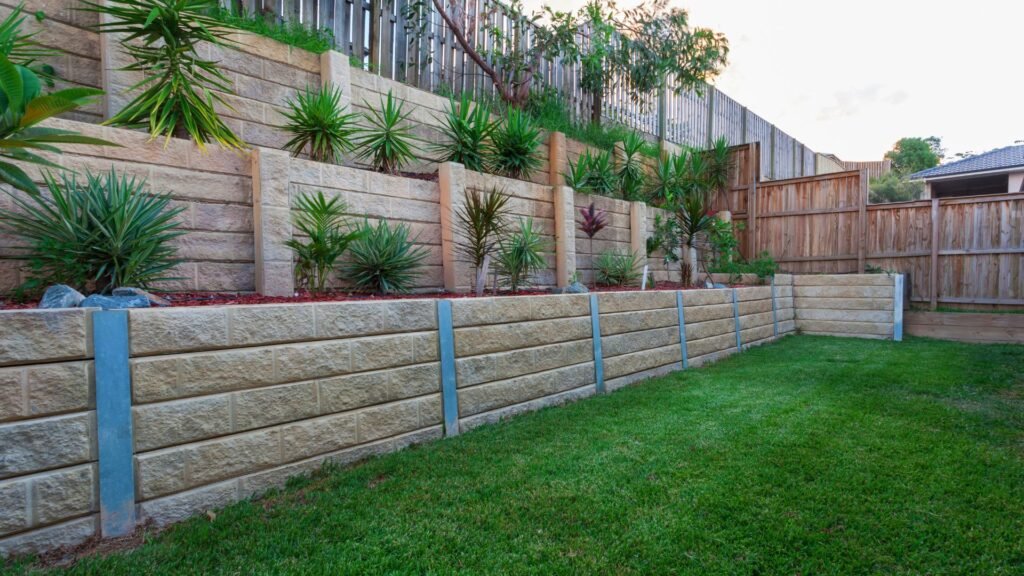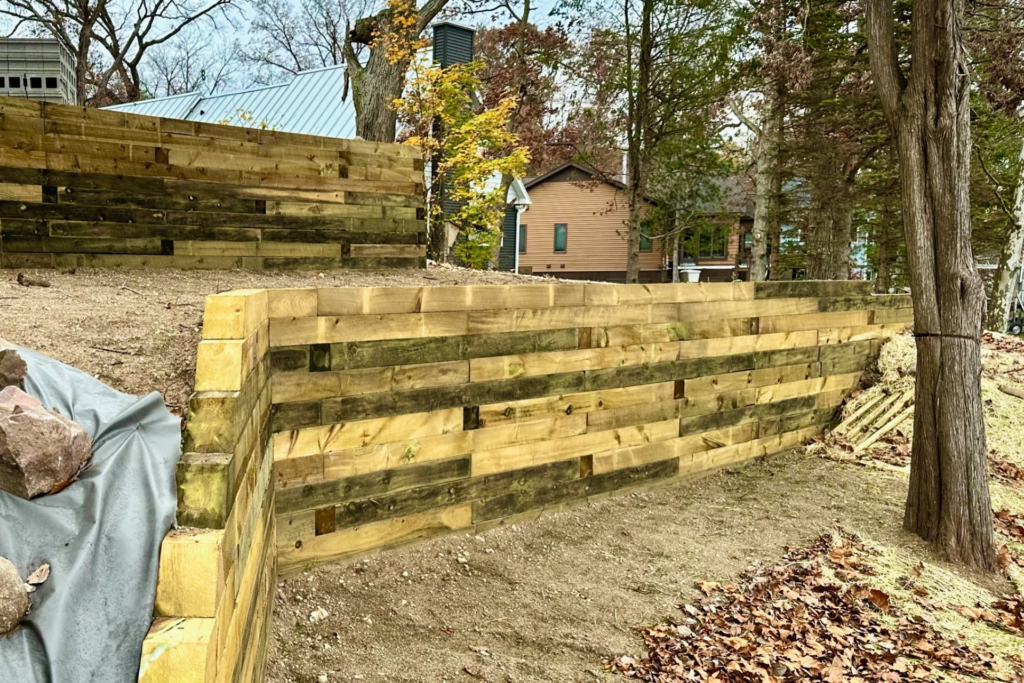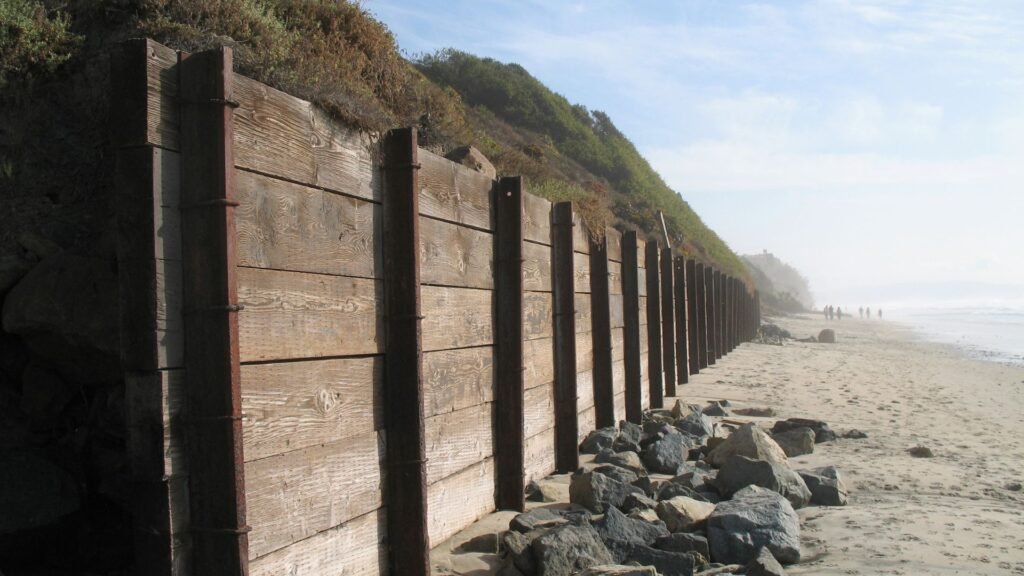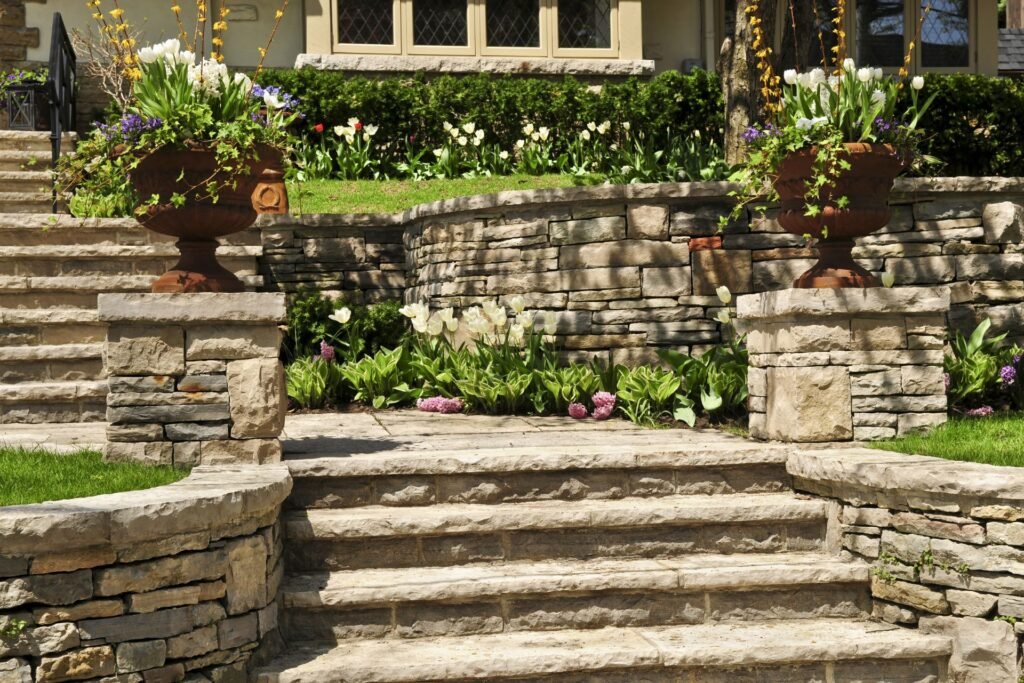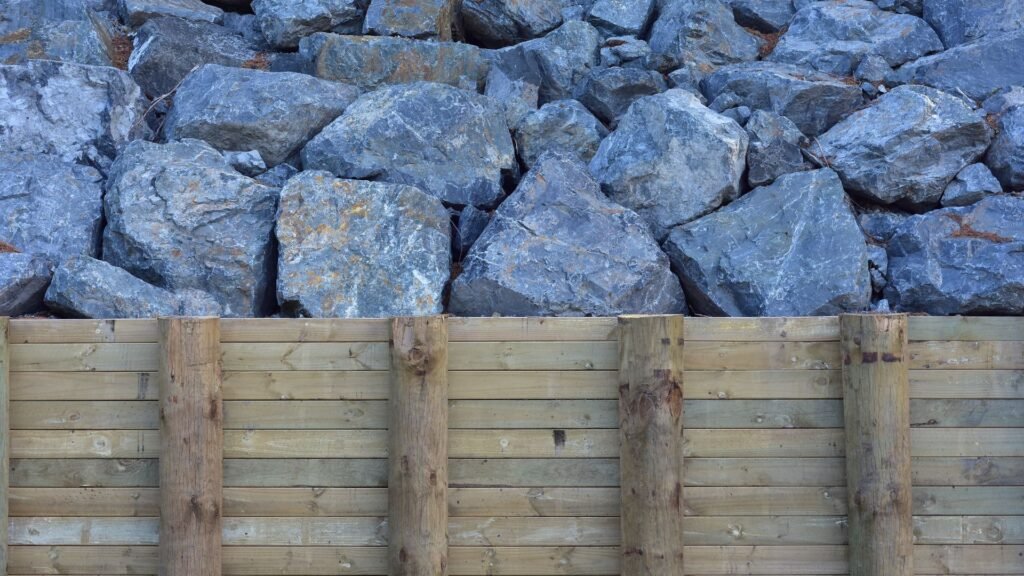Welcome to your ultimate guide on when and how to replace an existing retaining wall. If you’ve noticed your wall showing signs of wear, like cracks, bulging, or even leaning, it’s time to consider a replacement before it becomes a bigger problem. Retaining walls play a crucial role in maintaining the structure and beauty of your outdoor space, protecting against soil erosion, and providing necessary support for landscaping. Whether you’re tackling this project as a DIY enthusiast or thinking about hiring a professional, knowing the signs of failure and understanding the replacement process can save you time, money, and potential headaches down the road. Let’s dive in to explore the steps involved in replacing your retaining wall and how to ensure your new structure stands the test of time.
To replace an existing retaining wall, start by assessing the current wall for structural damage such as cracks, bulging, or leaning. Remove the old wall safely, prepare the site with proper excavation and drainage, and choose durable materials like concrete blocks or natural stone for the new wall. Lay a solid foundation, carefully stack materials, and backfill with gravel for stability. Finish by securing the structure and adding any desired landscaping. For complex projects or large walls, consider hiring a professional for a safe and long-lasting result.
Table of Contents
Signs It’s Time To Replace Your Retaining Wall
Retaining walls play a crucial role in stabilizing slopes and preventing erosion, but like any structural element, they don’t last forever. Whether your retaining wall is made of timber, concrete, or stone, it’s essential to recognize the signs of damage or wear that signal it may be time for a replacement. Here are the key indicators that your retaining wall is no longer performing its function effectively and needs to be addressed before it leads to more serious problems.
Structural Warning Signs
When it comes to retaining walls, structural integrity is critical. A wall that is beginning to show signs of failure can lead to safety hazards and property damage. Here are the main structural warning signs that indicate it may be time to replace your retaining wall:
1. Cracks and Bulging
Cracks, especially large or spreading ones, can be a major sign that your retaining wall is experiencing foundational issues. These cracks occur when the soil pressure behind the wall becomes too much for the structure to handle, often due to poor drainage or changes in soil conditions. If left unaddressed, these cracks can expand, causing parts of the wall to bulge outward. Bulging is a clear indication that the wall is failing to hold back the pressure it was designed to manage, and immediate replacement may be necessary to prevent a complete collapse.
2. Leaning or Tilting
A retaining wall should always remain straight and upright. If you notice the wall beginning to lean or tilt, whether it’s leaning towards or away from the earth it’s holding back, this is a serious concern. This movement often happens when the wall’s base is not properly anchored, or if the soil behind the wall becomes too saturated with water. A leaning wall is a sign that it’s no longer structurally sound, and the risk of total failure is high. In this case, reinforcing the wall may not be enough; replacement is likely the safer option.
3. Drainage Issues
Proper drainage is crucial for the longevity of any retaining wall. Poor drainage allows water to build up behind the wall, increasing the pressure on the structure. This can lead to cracks, bulging, and even complete wall failure over time. If your wall has visible signs of water damage, such as pooling or erosion at the base, or if water seems to be trapped behind the wall without a clear outlet, it’s time to consider replacing it. Addressing drainage problems during the installation of a new wall can prevent future issues.
4. Rotting (for Timber Walls)
If your retaining wall is made of timber, rotting is a natural concern. Wooden walls typically have a lifespan of 20-25 years, but exposure to moisture can cause them to rot sooner. Once the wood starts to decay, the wall loses its strength, making it unsafe to hold back soil. If you see visible signs of rotting, such as soft or crumbling wood, or if large sections of the timber are deteriorating, it’s a clear indication that the wall needs to be replaced. Replacing a rotting timber wall with a more durable material, like concrete or stone, could provide a longer-lasting solution.
Aesthetic Warning Signs
While structural issues are the primary reason to replace a retaining wall, aesthetic factors also play a role, especially when it comes to maintaining the curb appeal of your property:
1. Loss of Curb Appeal
Over time, retaining walls can become discolored, stained, or worn due to exposure to the elements. Erosion, mold growth, and general wear-and-tear can make the wall look unattractive. If your retaining wall is detracting from the overall appearance of your landscape, replacing it with a newer, more aesthetically pleasing option can help enhance your property’s curb appeal. This is especially important if you’re considering selling your home, as a well-maintained landscape can significantly boost your home’s value.
Maintenance Costs vs. Replacement Costs
Another important factor to consider is the cost of ongoing maintenance versus the cost of replacing the wall altogether:
1. Frequent Repairs
If you find yourself repeatedly repairing your retaining wall—whether it’s fixing cracks, stabilizing sections that have begun to lean, or addressing drainage issues—the costs can quickly add up. In many cases, the cumulative cost of frequent repairs can end up being more expensive than simply replacing the wall. Plus, constant repairs may not fully address the underlying issues, leading to continued problems down the line. By replacing the wall, especially with more durable materials and improved construction techniques, you can save money in the long run and avoid the hassle of ongoing maintenance.
In conclusion, if your retaining wall is showing signs of structural damage, aesthetic wear, or if maintenance costs are starting to pile up, it may be time to consider a full replacement. By acting quickly, you can prevent more serious problems, protect your property, and enhance the look of your landscape for years to come.

Planning Your Retaining Wall Replacement: Key Considerations
Replacing a retaining wall is a significant investment, and careful planning is essential to ensure it meets your needs while staying within your budget. Here are some key factors to consider before beginning your retaining wall replacement project:
Assessing the Terrain and Wall Function
Before diving into material options or design choices, you need to evaluate the terrain where your retaining wall will be built. The slope of the land, soil composition, and the purpose of the wall all play crucial roles in determining the best replacement solution.
- Terrain Slope: If your land has a steep slope, you’ll need a sturdier, more reinforced retaining wall to handle the increased pressure from the soil. On flatter terrains, you may have more flexibility in material and design.
- Wall Function: Are you replacing a retaining wall that supports a driveway, protects a garden, or divides a yard? The function of the wall influences the height, strength, and durability required. For example, retaining walls used for heavy-duty applications like supporting a slope or holding back large amounts of soil may require more durable materials like concrete blocks, while decorative walls could use more aesthetic materials like natural stone or brick.
Evaluating these elements allows you to choose the right type of wall that meets both aesthetic and functional needs.
Material Choices for the New Retaining Wall
Choosing the right material for your new retaining wall is crucial, as it affects the wall’s longevity, aesthetic appeal, and maintenance requirements. Here’s a quick overview of popular material choices:
- Concrete Blocks: Concrete blocks are a durable and versatile option, ideal for both functional and decorative walls. They can be stacked to different heights and are known for their strength. This material works particularly well for retaining walls on sloped terrains.
- Natural Stone: Natural stone offers a timeless, elegant look and blends seamlessly into natural landscapes. While it can be more expensive than other options, its durability makes it a long-term investment for those who value aesthetics.
- Brick: Brick walls are a classic choice, offering sturdiness and a traditional look. Bricks can be arranged in various patterns, allowing for both structural integrity and visual appeal. They’re ideal for moderate height walls and can add character to your outdoor space.
- Wood/Timber: Timber retaining walls are affordable and blend well with natural settings. However, wood is prone to decay and generally has a shorter lifespan compared to stone or concrete. This makes it a better choice for smaller, less permanent projects.
- Gabion Walls: Gabion walls are a modern, eco-friendly option that involves filling wire cages with stones or other materials. These walls are great for drainage, environmentally sustainable, and offer a unique, rustic appearance. They’re becoming increasingly popular for those seeking a balance between functionality and aesthetics.
Budget and Costs
Your budget is one of the most significant factors in planning a retaining wall replacement. Costs can vary significantly depending on material choice, wall height, and whether you plan on a DIY approach or hire a professional. Here are some general cost guidelines to consider:
- DIY: If you’re taking the DIY route, materials like wood or gabion cages can be more affordable. Wood/timber retaining walls may cost around $10 to $15 per square foot. Gabion walls, due to their simple construction, can range from $10 to $30 per square foot depending on the material used to fill the cages. Concrete blocks can range from $15 to $25 per square foot for a DIY installation, while natural stone and brick will be more expensive.
- Professional Installation: For those opting to hire a professional, expect labor costs to add significantly to your overall expenses. A professional installation for a concrete block retaining wall, for example, can range from $40 to $60 per square foot, while natural stone walls can reach $60 to $100 per square foot due to the labor-intensive nature of the material.
Carefully assessing your budget will help you choose materials and methods that align with your financial constraints while ensuring the wall meets your needs.
Local Regulations
Before starting your retaining wall replacement project, it’s crucial to check your local building codes, zoning laws, and permit requirements. In many areas, walls over a certain height (typically around 4 feet) will require a permit, and improper construction could lead to fines or the need to rebuild.
Building codes also ensure that your wall is structurally sound and safe, particularly if it’s supporting a large amount of soil or located near property lines. Consulting with your local building authority will help you understand the specific regulations in your area, and hiring a professional contractor can ensure compliance with all legal requirements.
By considering these key factors—terrain assessment, material selection, budgeting, and local regulations—you can confidently plan your retaining wall replacement project and create a structure that is both functional and visually appealing for years to come.

Step-By-Step Guide To Replacing An Existing Retaining Wall
Replacing a retaining wall can seem like a daunting task, but with careful planning and execution, it can be a rewarding DIY project or one that you confidently supervise with professional assistance. Here’s a detailed, easy-to-follow guide to help you navigate the process from start to finish.
Step 1: Evaluate and Remove the Old Wall
Before beginning any construction project, prioritizing safety is key. Here are the essential steps to take before dismantling your old retaining wall:
- Safety First: Always check for underground utilities by calling local authorities or utility providers before digging. Ensure that you wear protective gear such as gloves, goggles, and sturdy footwear to minimize the risk of injury.
- Removing the Wall: The method for removing your wall depends on the materials used.
- For timber retaining walls, the process is straightforward—simply remove the wood panels, nails, or screws.
- For stone or concrete walls, you may need heavy equipment like jackhammers or pry bars. If you’re working with larger, more complex structures, consider hiring professionals to ensure the job is done safely and effectively.
Step 2: Preparing the Site for the New Wall
Proper site preparation is critical to the stability and longevity of your new retaining wall.
- Excavation and Slope Preparation: After dismantling the old wall, clear out all debris, vegetation, and loose soil from the site. Ensure the area is level and properly graded to accommodate the new wall structure. For sloped sites, make sure the ground is appropriately stepped to allow for a stable base.
- Ensuring Proper Drainage: Drainage is a vital component of a successful retaining wall. Without adequate drainage, water buildup can weaken the structure over time. Install drainage pipes behind the wall or use layers of gravel to promote water flow away from the wall’s base. This will reduce hydrostatic pressure, which is a leading cause of wall failure.
Step 3: Building the New Retaining Wall
Once the site is prepped, you’re ready to start constructing the new wall. Careful attention to detail at this stage will ensure a durable and visually appealing result.
- Laying the Foundation: The foundation is the most important part of your wall, as it supports the weight and prevents shifting. Begin by laying down a layer of compacted gravel as a base. For heavier walls or those exceeding a few feet in height, a concrete footing may be necessary to add extra support and prevent settling over time.
- Stacking the Wall Material: Now that your foundation is set, it’s time to stack the wall materials.
- For concrete block walls, stagger the blocks in a brick-like pattern. This not only enhances the wall’s stability but also adds an aesthetic appeal. Ensure each row of blocks is leveled and securely stacked to prevent future movement.
- Tip: Use a level frequently to ensure that the wall remains straight and aligned as you build upwards.
- Backfilling and Securing the Wall: Once your wall reaches the desired height, it’s time to backfill. Use gravel and soil to backfill behind the wall, which helps to support the structure while also promoting drainage. Compact the backfill material after each layer to prevent shifting over time.
Pro Tip: Place a layer of landscape fabric between the soil and the backfill material to prevent soil erosion and minimize weed growth.
Step 4: Finishing Touches
With the new retaining wall in place, the final step is to protect and beautify it:
- For wood or stone retaining walls, consider applying a sealant or protective finish to extend their lifespan. This will help protect the materials from moisture, weathering, and potential damage from insects.
- To enhance the look of your new retaining wall, add landscaping elements such as plants, decorative stones, or outdoor lighting. Incorporating these features not only improves the visual appeal of the wall but also helps it blend seamlessly into your outdoor space.
By following these steps, you can successfully replace an existing retaining wall, creating a sturdy and attractive structure that will last for years to come.

DIY Vs. Hiring A Professional: Pros And Cons
When it comes to tackling a home improvement or landscaping project, homeowners often face the decision between doing it themselves (DIY) or hiring a professional. Both approaches come with their own advantages and challenges, and making the right choice depends on factors such as budget, time, skill level, and project complexity. Here’s a detailed breakdown of the pros and cons of DIY and professional services, helping you make an informed decision for your next project.
DIY Benefits
Cost-Saving Potential
One of the most compelling reasons people choose the DIY route is the potential to save money. By handling labor yourself, you cut out the expense of hiring a professional, which can significantly reduce the overall project cost. Whether it’s painting, building, or landscaping, avoiding labor fees can make a big difference, especially for budget-conscious homeowners.
Satisfaction of Completing a Hands-On Project
There’s a certain level of pride and accomplishment that comes with completing a project on your own. For DIY enthusiasts, the personal satisfaction of seeing the tangible results of their efforts is a powerful motivator. Additionally, hands-on projects offer the opportunity to learn new skills and gain a deeper understanding of home maintenance, which can be rewarding in the long run.
DIY Challenges
Time Commitment
While saving money is appealing, DIY projects can be time-consuming. What may take a professional a few hours or days could take a novice significantly longer due to inexperience or lack of specialized tools. Many homeowners underestimate the time commitment required, leading to drawn-out projects that disrupt daily life.
Physical Labor and Need for Specialized Tools:
DIY often requires more than just basic skills; it demands physical labor and access to specialized tools. If you’re unprepared for the physical strain or don’t have the right equipment, the project can quickly become overwhelming. Renting or purchasing tools can add to the cost, potentially offsetting some of the savings gained by doing the work yourself.
When to Hire a Professional
In certain situations, it’s best to leave the work to a professional, especially when the project involves technical expertise or safety concerns.
Complex Terrain or Large Walls
If your project involves uneven or complex terrain, or you’re building large retaining walls or fences, it’s wise to hire a professional. These projects require precision, expertise, and an understanding of structural integrity. A professional contractor will ensure that the installation is safe and meets local building codes, which can help avoid costly mistakes down the road.
Potential for Structural Issues
When there’s a higher potential for structural problems, such as when dealing with foundational elements or electrical work, a professional is essential. These areas require specific knowledge to ensure they’re done correctly, minimizing risks to your home and family. A licensed professional brings experience and access to resources that DIYers may lack.
Tips for Finding Reputable Contractors
If you’ve decided to hire a professional, finding a reputable contractor is key. Start by asking friends, family, or neighbors for recommendations, as word-of-mouth referrals are often reliable. Also, be sure to check online reviews and verify the contractor’s credentials. Look for someone who is licensed, insured, and has a portfolio of similar work. Lastly, always ask for multiple quotes to compare prices and services before making a decision.
Cost Comparison: DIY vs. Hiring a Professional
DIY Costs
While the initial appeal of DIY lies in saving on labor, it’s essential to consider the costs beyond just materials. Tools, equipment rentals, and the potential for mistakes can add to the overall expense. If your project requires significant time and effort, you might end up paying with sweat equity rather than money.
Professional Costs
On the other hand, hiring a professional may involve higher upfront costs due to labor fees, but it also comes with the benefit of expertise and efficiency. Professionals often have access to bulk material pricing, which can help reduce some of the costs. While the professional route may be more expensive, it usually ensures a high-quality result and often includes warranties or guarantees for the work done.
In conclusion, deciding between DIY and hiring a professional depends on your budget, the complexity of the project, and your available time and skills. For smaller, less technical projects, DIY can be a rewarding and cost-effective option. However, for larger, more complex tasks, hiring a professional ensures the job is done correctly, safely, and efficiently.

Maintenance Tips To Prolong The Life Of Your New Retaining Wall
Proper maintenance is essential for ensuring the longevity of your retaining wall. By following these expert tips, you can safeguard your investment and maintain both its structural integrity and aesthetic appeal over the years.
Regular Inspections
Conducting regular inspections is one of the most important aspects of retaining wall maintenance. Take the time to look for early signs of wear and tear, such as cracks, bulging, or shifting. These minor issues, if caught early, can often be addressed before they lead to more significant structural problems. Additionally, inspect for drainage issues, such as pooling water or clogged outlets, which can increase pressure on the wall and compromise its stability. Early detection of these problems helps ensure that your wall remains strong and functional for years to come.
Drainage Maintenance
A key factor in the longevity of any retaining wall is proper drainage. Water is one of the most common culprits behind wall failure, as it builds up pressure behind the structure. To prevent water damage, it’s crucial to maintain the drainage systems that were likely installed during construction. These systems may include pipes, weep holes, or gravel beds designed to divert water away from the wall. Make it a point to clear debris from drainage pipes and check that gravel beds are free of obstruction. This will allow water to flow freely, reducing the risk of water buildup, which can cause the wall to weaken or collapse over time.
Seasonal Care
Retaining walls are exposed to varying weather conditions throughout the year, so seasonal care is essential. For those in colder climates, winter months can present specific challenges. Frost heave, for example, can cause the soil behind the wall to expand as it freezes, putting additional pressure on the structure. To mitigate this, ensure that the wall is properly insulated and protected against the freeze-thaw cycles. Additionally, take steps to prevent soil erosion, which can worsen during heavy rainfall or snowmelt. Applying a protective barrier or simply monitoring drainage during these months can help prolong the life of your wall by reducing the strain caused by weather extremes.
Plants and Landscaping
The right landscaping can not only enhance the beauty of your retaining wall but also provide functional benefits. Planting vegetation strategically around the wall can help reduce soil erosion, which is a common cause of structural weakening. Certain plants, such as ground cover or deep-rooted species, help anchor the soil in place, preventing it from washing away during rain or wind. When selecting plants, opt for those that thrive in your region and complement your overall landscape design. This combination of form and function will ensure that your wall not only looks great but also serves its purpose for years to come.
By implementing these maintenance tips—regular inspections, proper drainage upkeep, seasonal care, and thoughtful landscaping—you can significantly extend the life of your retaining wall. Taking the time to care for your wall now will save you from costly repairs down the road while ensuring it remains a beautiful and functional part of your outdoor space.

FAQs: About Replace Existing Retaining Wall
How do I know when it’s time to replace my retaining wall?
It’s time to replace your retaining wall when you notice signs like large cracks, bulging, leaning, or significant drainage problems. Rotting timber, failing mortar in stone or brick walls, or excessive wear and tear can also indicate that a wall is nearing the end of its lifespan.
Can I repair my retaining wall instead of replacing it?
In some cases, minor cracks or slight leaning can be repaired. However, if the structural integrity is compromised, it’s often more cost-effective and safer to replace the wall. Repairs may be temporary solutions, but a full replacement ensures long-term stability.
How much does it cost to replace a retaining wall?
The cost of replacing a retaining wall varies based on factors like the size of the wall, materials used, and whether you choose to DIY or hire a professional. On average, DIY projects can range from $20 to $40 per square foot, while professional installations can be anywhere from $50 to $150 per square foot, depending on the complexity.
Do I need a permit to replace my retaining wall?
In many areas, you may need a permit to replace a retaining wall, especially if the wall exceeds a certain height (typically over 3-4 feet). Check your local building codes and regulations before starting the project to avoid legal complications.
What are the best materials for a new retaining wall?
The best material depends on your budget, aesthetic preference, and the wall’s purpose. Common materials include concrete blocks, natural stone, brick, and timber. Concrete blocks are durable and easy to work with, while natural stone offers a more rustic look. Timber is an affordable option but has a shorter lifespan.
How long does it take to replace a retaining wall?
The time it takes to replace a retaining wall depends on the size of the project and whether you’re doing it yourself or hiring a contractor. A simple, small wall may take a weekend to complete, while larger, more complex walls may take several days or even weeks if done professionally.
What kind of drainage system should I include with my new retaining wall?
A proper drainage system is critical to the longevity of your retaining wall. Incorporate features like perforated drainage pipes, gravel backfill, and weep holes to prevent water buildup behind the wall, which can cause pressure and lead to failure.
Can I reuse the materials from my old retaining wall?
In some cases, you can reuse materials like stone or brick if they’re still in good condition. However, it’s usually better to start fresh with new materials to ensure the longevity and structural integrity of the new wall, especially if the old wall was showing signs of significant wear.
Should I hire a professional or replace the retaining wall myself?
If the wall is relatively small and you have some construction experience, you might consider replacing the wall yourself. However, for larger or more complex projects, or if the wall supports a lot of weight, hiring a professional is recommended for safety and ensuring the wall is built to last.
How can I maintain my new retaining wall to extend its life?
To maintain your retaining wall, regularly check for signs of damage like cracks or leaning. Keep the drainage system clean to prevent water buildup, and remove any excess vegetation that could cause root damage. For timber walls, consider sealing the wood to protect against moisture and rot.
Conclusion
Replacing a damaged retaining wall is essential for maintaining the safety, aesthetics, and overall value of your property. A deteriorating wall not only poses risks but can also detract from the beauty of your outdoor space. By upgrading to a new, well-built retaining wall, you can dramatically enhance your landscape’s visual appeal and structural integrity. Whether you’re a DIY enthusiast looking for a weekend project or planning to hire a professional, now is the perfect time to assess your current wall and consider a replacement. Ready to transform your yard? Consult with a landscaping expert or explore additional resources to get started on your retaining wall project today.
About the Author:
Mike Veail is a recognized digital marketing expert with over 6 years of experience in helping tradespeople and small businesses thrive online. A former quantity surveyor, Mike combines deep industry knowledge with hands-on expertise in SEO and Google Ads. His marketing strategies are tailored to the specific needs of the trades sector, helping businesses increase visibility and generate more leads through proven, ethical methods.
Mike has successfully partnered with numerous companies, establishing a track record of delivering measurable results. His work has been featured across various platforms that showcase his expertise in lead generation and online marketing for the trades sector.
Learn more about Mike's experience and services at https://theleadguy.online or follow him on social media:



